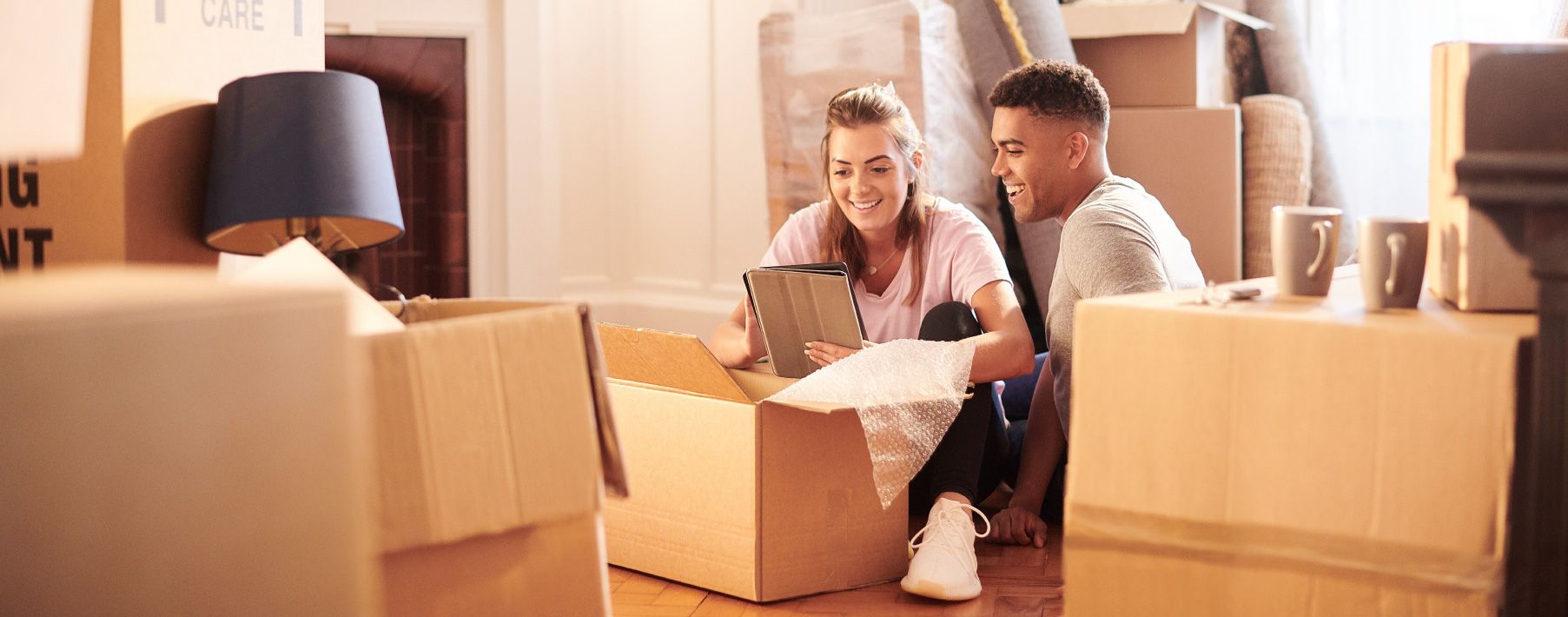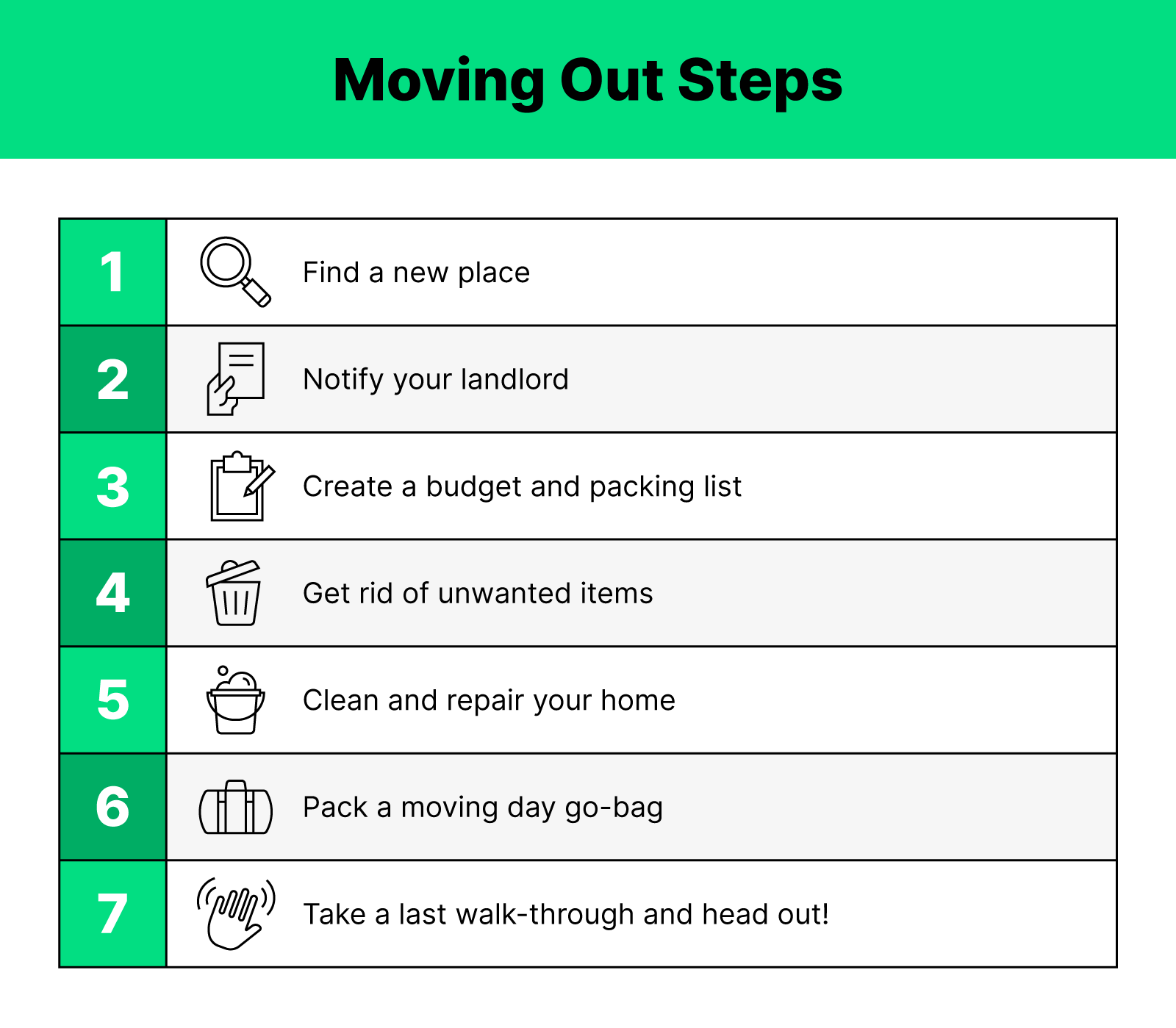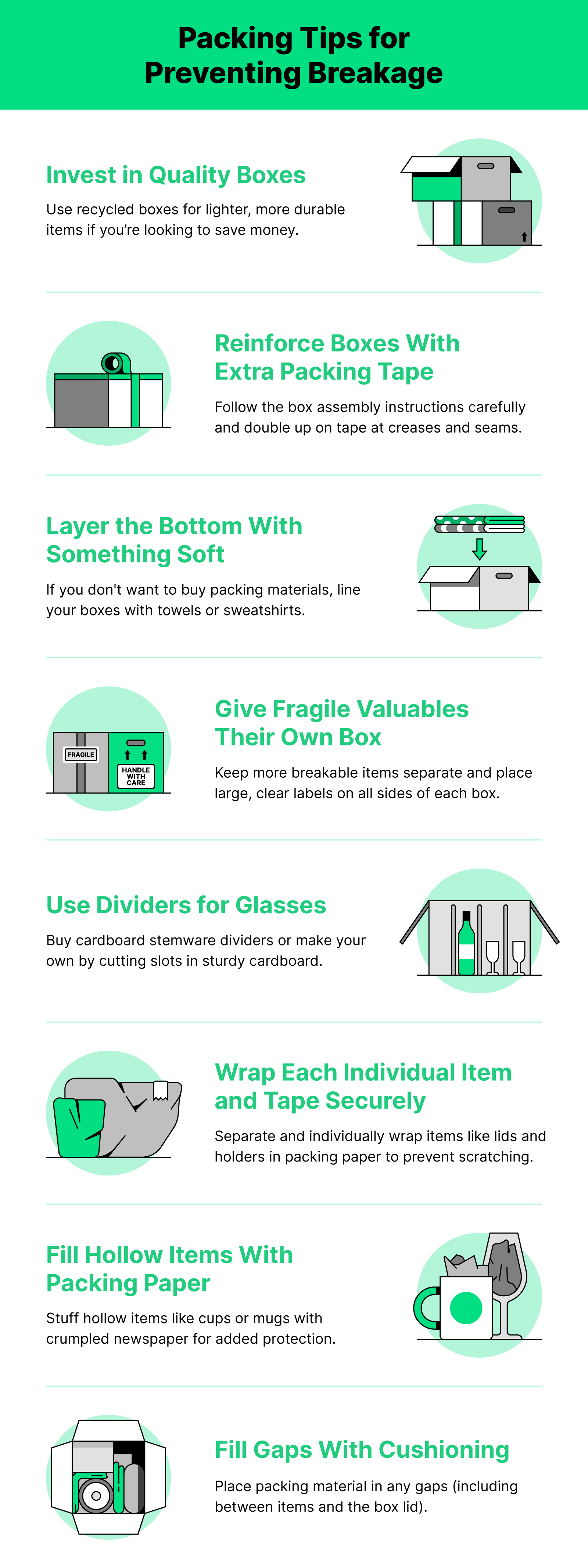Moving Out Checklist For Apartments and Homes

They say that nothing is certain except death and taxes, but anyone who’s ever moved knows that the stress that comes with the process of changing homes is virtually a guarantee. Given that the average American moves over 11 times in their lifetime, it’s worth the investment of time and energy to establish a moving routine that takes at least some of the anxiety out of the process.
While stress may be an inevitable part of moving, the amount of stress you experience can be mitigated to a certain degree with plenty of time, some proactive planning, and an expert-informed strategy. Particularly if your moving process includes buying, renting, or selling a home, you’ll want to start planning well in advance. We recommend giving yourself a timeline of at least three months and tackling your moving to-do’s in stages to keep from feeling overwhelmed.
To assist in stripping some of the stress out of your moving experience, we’ve charted a basic three-month moving out checklist that you can adapt to your particular situation and needs.
What do I need to do before I move out?
There are seven major things you’ll need to do before moving out:
- Find a new place
- Notify your landlord
- Create a budget and packing list
- Get rid of your unwanted items
- Clean and repair your home
- Pack a day-of-move bag
- Take a last walk-through to make sure you haven’t missed anything before you leave
However, to create a truly effective move-out plan, you’ll want to break these broader steps into their individual tasks and schedule them out in the months leading up to your move. Give yourself enough time to tackle each item without a rush, plus some extra time in case unexpected challenges arise.

Three months before the move
The first stage of the moving out process should start about three months before you plan to move out, if not a little bit earlier. Particularly if you’re buying or selling your home, you’ll need plenty of time for things like choosing a realtor and securing a home loan, which takes a bit more time. Even if you’re renting, planning at least a few months ahead gives you plenty of space to give notice to your landlord, set a budget for your move, and save up for moving expenses if necessary.
1. Find a new place
Three months is the absolute minimum length of time you should give yourself to begin searching for a new home, particularly if you’re buying. It’s worth slowing down to invest extra time in setting yourself up for house hunting success by choosing the right realtor, finding the best mortgage rates available to you, and narrowing your search down to a location you love.
Though renting usually happens on a shorter timeline, renters should still start narrowing down their wish list of ideal home features and selecting a new neighborhood well in advance. Thinking through these things ahead of time can prevent homebuyer’s (or renter’s) remorse.
2. Notify your landlord or realtor
If you’re a renter, check the terms of your lease to find out how many days in advance you need to let your landlord know, in writing, that you’re planning to move. (The standard is 30, but some states require two months or more.)
If you own your home, you’ll want to start looking for a realtor at least three months before your move, so you have time to interview different potential agents and make sure you choose one you like and trust. This will also give you plenty of time to make any home improvements that will increase your home’s value.

3. Set a moving budget
Create a detailed moving budget at the beginning of your moving process. This way you have time to save if you find that your move is going to cost more than you originally planned. Make sure your budget includes:
- Truck rental and gas mileage
- Professional movers
- Packing boxes
- Tape, bubble wrap, packing paper, and labels
- Mattress and furniture covers
- Additional rental equipment (dollies, ramps, etc.)
- Shipping costs (if sending any items separately)
- Lodging and food
You may also need to place a deposit on your new home before you receive your previous security deposit refund or the sale of your home is complete, so you’ll need to have those funds set aside separately as well.
4. Create a home inventory
A home inventory serves three purposes: first, it will help you determine what size moving vehicle you need to rent, as well as how many boxes and other moving supplies you’ll need to get everything packed.
Second, it will help you simplify your packing process by allowing you to think through how to group your belongings into boxes and how to arrange them in your moving vehicle to best maximize your space. Finally, your home inventory will serve as a day-of checklist to make sure nothing gets lost or left behind in the move.
There are a number of home inventory apps that make it easy to catalogue all of your possessions and store them digitally so they can’t get lost. Another clever hack is to create a home walkthrough video that will help you inventory your possessions for your move and in the event that you need to file a home insurance claim.
5. Schedule some help
Whether you’re hiring professional movers or you’re calling in favors from friends and family, you’ll want to get your moving day on the calendar with plenty of advanced notice. Particularly in peak moving seasons (like the summer), make sure you’re placing reservations for movers, van rentals, and even ordering boxes and other supplies before they’re booked.
If you’re lucky enough to have friends helping out with your move, show your appreciation by giving them plenty of advanced notice so they can plan their day without any hassle. Communicate all of your plans clearly, and be sure to order a thank-you meal on moving day, too.
One month before the move
About a month before your move, it’s time to start in-home preparations like improvements and repairs. You can even get a jump on your packing process by beginning to load up infrequently used items or spare bedrooms.
6. Donate or sell off unneeded items
Before you begin to pack, start by honestly evaluating what things in your home you can get rid of before moving day. Be as sensible as possible—the more items you can sell, donate or throw away, the less taxing your packing process will be. Also, the more you minimize, the less you have to physically move.
7. Begin repairs
Start repairing appliances, replacing light bulbs, and taking care of anything else that needs to be fixed before you move. Focus on larger tasks and leave things like cleaning scuffs and painting wall marks until you’ve done most of your moving out since you’re likely to leave more marks as you’re shifting furniture and boxes around the house.
8. Start packing
Finally, it’s time to start packing. Pull out your home inventory and, if you haven’t already, use it to create a plan for what you’ll group in different boxes, what will be shipped, and what you will want to load into your vehicle on its own. Start with items you won’t need on a daily basis, like guest bedroom furniture, holiday decorations, and other non-essentials and work from there.
If you can, clear out a space in a guest room or garage and use it as a “staging area” to place packed boxes until moving day arrives. Save fragile items for last so they spend less time in containers where they might be bumped or dropped, and use our expert packing tips below to prevent breakage during the move.

9. Take time off work
As soon as you have your moving day picked, decide how many days you need to complete the move and submit a request for time off from work. You may be able to fit your move into a weekend if you’re moving locally (or if you’re highly motivated), but if you can afford to take at least a day off, you’ll appreciate having a cushion for unexpected delays.
10. Make sure the family is situated
If you have kids or pets, start preparing them for the move a few weeks in advance. Make a list of what your pets will need on moving day and during the trip to your new home. Set aside time with your whole family to explain what’s happening, answer any questions, and set your kids up for a stress-free moving experience.
One to two weeks before the move
You’re in the home stretch! With just a few weeks left until you move, it’s time to tackle final tasks and tie up loose ends. If you’ve been working steadily on your moving process from the three-month mark, you should be feeling calm and in command as you square away the last steps of your move.
11. Notify your insurance company
Wait until a week before your move to notify your insurance company to avoid paying for coverage on your new home before you’ve moved in. If you’re switching to a new home insurance company, make sure you contact both providers to start your new policy and end your previous coverage.
If you’re moving from a rental to a home you own, make sure you enroll in homeowner’s insurance rather than rental insurance. And if you're moving from one home to another, it's a good time to review your policy to make sure it still fits your needs.
12. Clean your entire home
Once most of your belongings are packed away, you can start the process of performing one final move-out clean. This is essential for all moves, but it’s especially important for renters in order to get a full refund on their security deposit.
For an extra layer of protection, you can request a move-out inspection walkthrough with your landlord in the last week before you move. Have your landlord look at the apartment and confirm (in writing) that there are no damages, messes, or other issues that would require them to withdraw from your security deposit.

13. Update your information
Make sure anyone who needs to reach you has your new address before you move. In addition to your landlord and your insurance company, you should update your contact information with:
Contact the post office in your current town or city to register a change of address so that any mail sent to your old address will be automatically forwarded to your new home.
- Your employer
- Your utility companies
- Your cable, internet, and phone provider(s)
- Banks, credit cards, and other financial institutions
- Your health insurance company
- Your auto insurance company
The week of the move
With the majority of your move already taken care of, you can enter your final week with confidence. Use this time to tackle any remaining minor tasks, field unexpected challenges, and say goodbye to your home.
14. Make a moving day go-bag
Separate from your moving boxes, put together a “carry-on” bag for moving day. You will want to include the essentials you’ll need readily available during your trip to your new home and on your first couple of days before you begin unpacking.
Each person should have a personal go-bag with:
- A few sets of clothes and pajamas
- Toiletries
- Medications
- Essential electronics and chargers
You’ll also want a bag of shared moving-day essentials, including:
Important documents
- A roll of toilet paper
- Hand soap
- A small tool kit
- Scissors or a box-cutter
If you have pets or kids, pack go-bags for them that include a few snacks, toys, entertainment options, and the essentials.
15. Take one last walkthrough
Once everything is in your vehicle, and you’re ready to go, take one last walkthrough to look for forgotten items and final quick fixes. When you’re sure everything’s out, return your keys and head off to your new home.
How much should you save before moving out?
One of the main reasons that moving is so stressful is because it’s expensive. The American Moving and Storage Association estimates that the average cost of moving for two- to three-bedroom households is $2,300 locally and $4,300 for long-distance trips. In addition to planned costs, unexpected expenses are common, and mistakes can be pricey to fix.
The last thing any mover wants is to spend all of that money getting settled into their beautiful new home only to lose possessions in an emergency like a fire, weather event, or theft (or in an accident during the move). That’s why it’s essential to make sure your home and belongings are insured with home insurance before, during, and after your move. With the security of knowing you have coverage in an emergency, you can focus on planning a smooth, stress-free moving experience.




